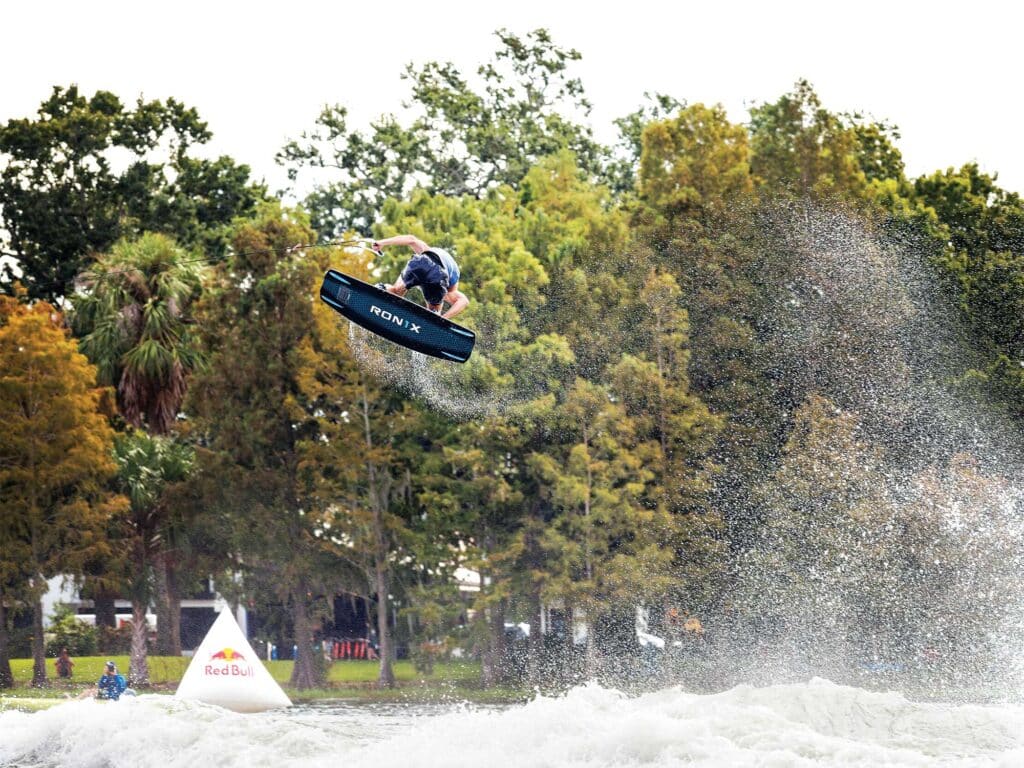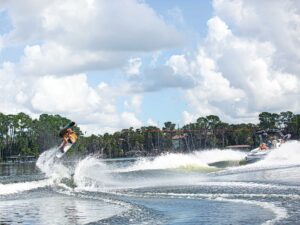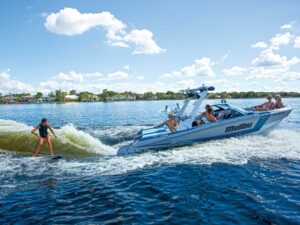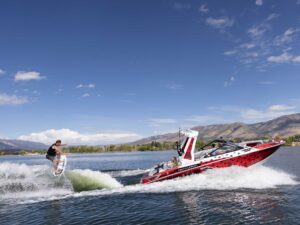Progression in wakeboarding can take the form of landing a new trick or adding a unique touch on an existing trick. Either path can open the door to new ideas and development that build over time.
It’s like evolution. But then there are the rare, giant leaps that make the wakeboarding history books, a moment in time burned into the minds of wakeboarding enthusiasts. In a contest format set to raise the bar on what can be done on a wakeboard, a new chapter of wakeboarding was created at the Red Bull Double or Nothing last September when Thomas Herman performed a triple back roll.
In the early days of wakeboarding, the double-up (which, if you don’t know, is the use of two boats to create a combined wake) was utilized to give the rider more air time to complete an extra 180-degree spin or put a grab on a trick that was otherwise rushed off the small boat wakes of the time. Inboard competition boats were ski boats designed to create the smallest wake possible. But at slower speeds of 18 to 20 mph, wakeboarders and trick skiers could get some lift out of the wake. When wakeboarding pioneers realized they could hit the big roller created when the wake doubled as the boat U-turned at the end of a pass, the sport saw a deluge of new tricks.

The boats continued to get bigger and heavier. The engines, transmissions and propellers pushed more weight that would displace more water, and the wakes grew to a point where the double-up was no longer necessary for progression. In fact, many riders shied away from hitting double-ups because the wakes were big enough to learn new tricks. Plus, there was the looming fear of injury. It is safe to say that most pro-level injuries have occurred during double-up attempts.
The double-up is unpredictable and relies heavily on the driver to create a solid set-roller. Even more unique about the double-up is rider preference. Some riders like the angle teed up or closer to a 90-degree approach. Others prefer a more open or easier pocket. Even in perfect conditions, the double-up is a volatile beast that produces a stuntlike kick that is difficult to control.
Read Next: Ten Ways to Keep Your Wakeboarding Fun
Parks Bonifay—considered the GOAT—leveraged the double-up to launch him into legendary status. It only makes sense that this event was the brainchild of Parks and Red Bull, giving riders the motivation to return focus to the double-up and test the edge of progression in a winner-takes-all format. The first inaugural event was in 2004, and it proved an instant success.
Thomas Herman, a rider for Supra Boats, credited hard work and dedication for achieving the first-ever triple flip. “This thing was a battle. Guesstimate roughly 250 double-ups, and on the 30th attempt, we got her done.”
Thank you, Thomas Herman, for keeping the progression going.









